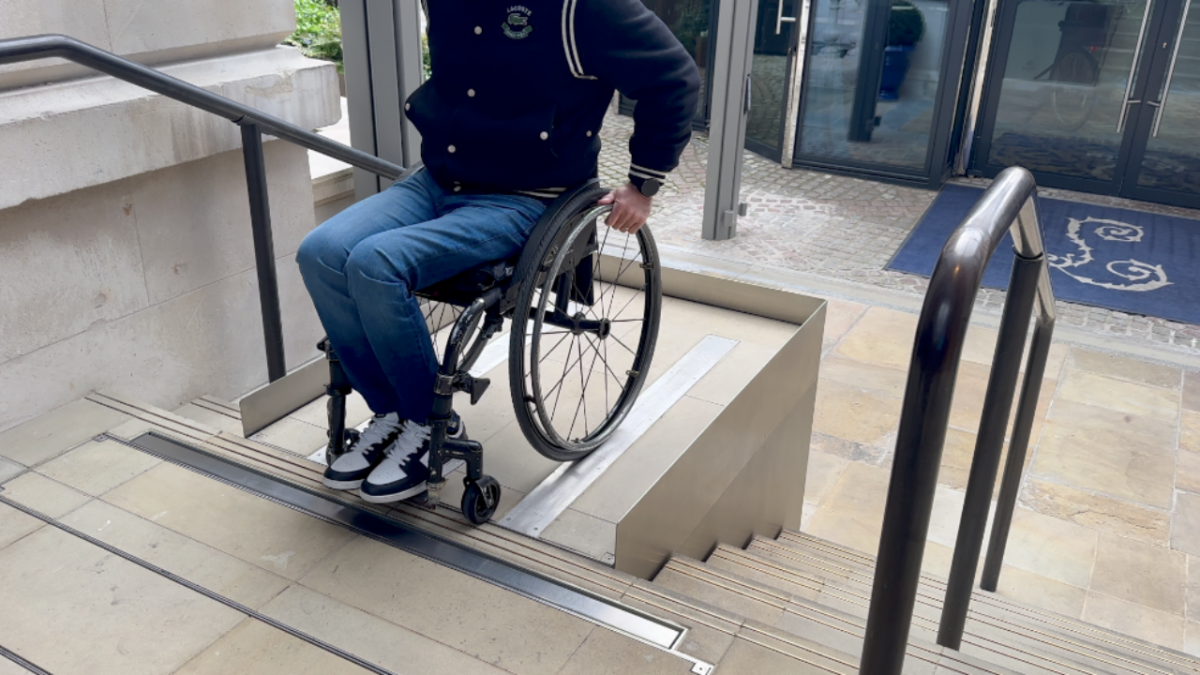Key Takeaways
- Inclusive design benefits everyone, not only people who use wheelchairs.
- Accessibility is still hindered by steep ramps, narrow doors, and impractical “tick-box” solutions.
- True inclusion comes from lived experience influencing design.
- Modern engineering, such as hidden platform lifts, allows heritage buildings to remain elegant yet accessible.
- Collaboration between architects, engineers, and wheelchair users is key to long-term progress.
Introduction
Across the UK, accessibility continues to evolve — yet progress remains uneven. This article explores how inclusive design transforms mobility and independence for wheelchair users, and how technology like hidden platform lifts bridges the gap between heritage protection and modern access.
Why Inclusive Design Matters for Everyone
Inclusive design isn’t just about ramps and regulations; it’s about creating spaces that work for all people. When buildings are accessible, they’re also more comfortable for parents with pushchairs, visitors with temporary injuries, or anyone who simply appreciates intuitive, barrier-free design. Accessibility isn’t a specialist requirement anymore — it’s a universal need. Whether it’s a lift built into a historic staircase or an entryway designed with flat access, every improvement in accessibility benefits the wider public too.
The Everyday Barriers Still Holding People Back
Despite legal progress, wheelchair users still face daily frustrations. Entrances are often round the back, portable ramps are too steep, and door thresholds create unnecessary obstacles. A small three-inch lip at a pub entrance can stop a wheelchair entirely. Some venues claim to be “wheelchair accessible” but offer no accessible toilet. Others provide steep, temporary ramps that are unsafe for both visitors and staff. Inclusive design means eliminating these “tick-box” solutions and designing accessibility into the building from the start, not as an afterthought.
Designing Buildings That Empower, Not Limit
True accessibility extends beyond physical entry. It’s about dignity, ease, and independence. The best solutions feel seamless — like the hidden lifts that blend perfectly into listed buildings. Modern engineering allows these solutions to remain almost invisible when not in use, maintaining the architectural integrity of heritage spaces while providing safe, level access when needed. Hidden platform lifts such as the Buckingham Listed Building Lift, Waterloo Lift, and Edinburgh Access Lift exemplify this philosophy. Each one provides discreet yet fully compliant vertical access that protects both user experience and historic architecture.
The Problem With “Accessibility by Assumption”
Architects and developers often assume they understand accessibility, but lived experience tells another story. A ramp that looks fine on paper may be too steep in practice; a corridor may meet minimum width requirements but still feel tight when turning a wheelchair. Accessibility training is still rarely embedded into architectural education — sometimes limited to just a few hours in a multi-year True progress will come when accessibility design becomes a fundamental part of every architect’s training. For practical guidance, the Royal Institute of British Architects (RIBA) provides clear resources on inclusive design standards and accessible building principles. Visit RIBA’s Inclusive Design Guidance for best practice advice.
Creating Accessible Heritage Spaces
Many historic sites are improving access, but some still rely on outdated solutions like stair climbers, which can feel unsafe or overly exposed. Platform lifts designed specifically for heritage settings — such as those by Sesame Access — enable elegant, respectful solutions that serve both preservation and inclusion. When accessibility feels natural rather than forced, visitors can focus on the experience rather than the barriers. For real-world case studies and engineering detail, see Bespoke Lift Solutions for Heritage Sites
Frequently Asked Questions (FAQ)
Q1: What does ‘inclusive design’ mean?
Inclusive design ensures environments are usable by as many people as possible, regardless of age, mobility, or ability.
Q2: Why are hidden platform lifts important for heritage buildings?
They provide modern accessibility without altering historic aesthetics, meeting both design and compliance needs.
Q3: What are the most common accessibility mistakes architects make?
Assuming ramps or wide doors are enough — without testing how they actually work for wheelchair users.
Q4: Are portable ramps a good solution?
They can help temporarily, but fixed or integrated solutions are safer, more dignified, and longer-lasting.
Q5: How can I discuss access solutions for my building?
Book a Teams Meeting with one of our Project Managers to discuss bespoke lift solutions for your project.
Relevant Links
- Waterloo Lift
- Edinburgh Access Lift
Suggested Call-to-Action
Speak to our engineering team about designing accessibility that empowers everyone — Book a Teams Meeting.

